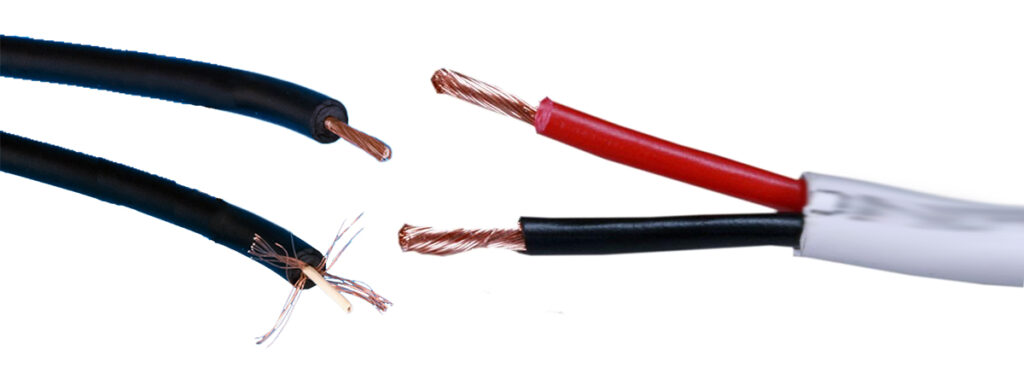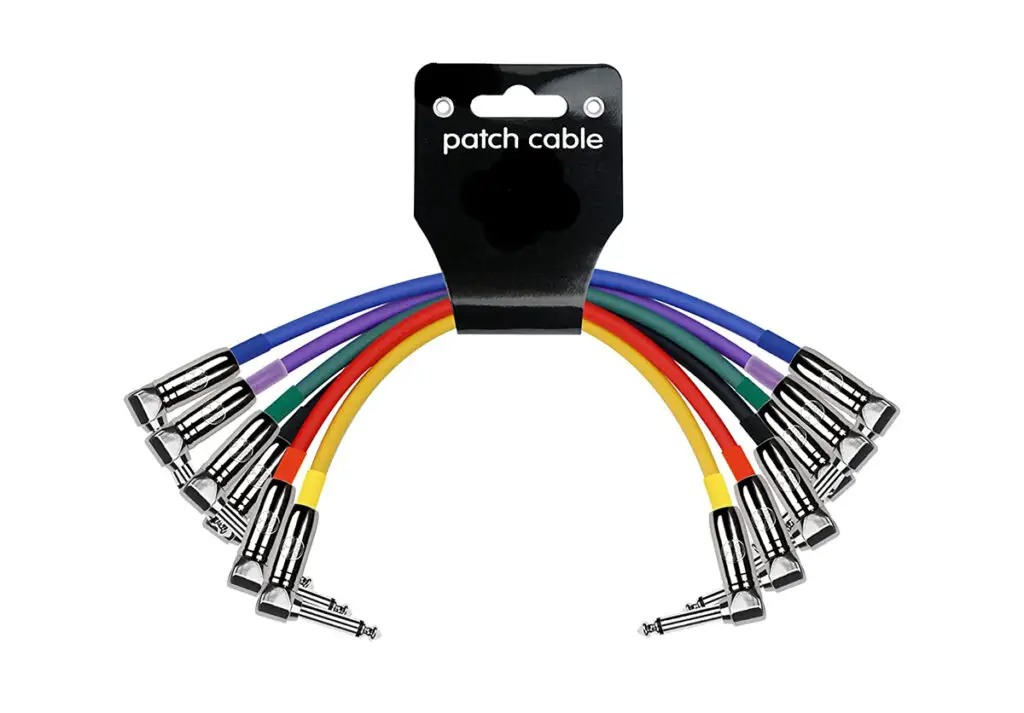The world of audio cables can be a complex landscape, with various types designed to serve different and specific functions in an audio system. Among these cables, instrument cables and speaker cables play crucial roles in transmitting signals and connecting different components.
What’s the difference between a speaker cable and an instrument cable?
Speaker cables connect amplifiers to passive speakers, handling high power with large conductors. Instrument cables link instruments to amps or audio interfaces, with a central conductor and shielding for noise protection. Using the wrong cable can damage equipment or cause poor audio performance.
Understanding their differences and applications is essential for optimizing audio performance and protecting your equipment from potential damage.
This article will explore the distinctions between patch cables and speaker cables, highlighting their unique construction, intended uses, and connectors to help you make informed decisions when setting up your audio system.

What Is The Difference Between Speaker Cable And Instrument Cable?
Speaker cables and instrument cables are designed for different purposes in audio systems, and they have different construction and specifications.
Purpose
Speaker cables are used to connect an amplifier or a powered mixer to passive speakers. They transmit amplified audio signals from the power amplifier to the speakers, driving them to produce sound.
Instrument cables are used to connect instruments, such as guitars, basses, or keyboards, to amplifiers, effects pedals, or audio interfaces. They transmit unamplified audio signals from the instrument to the device that will process or amplify the sound.
Construction
Speaker cables typically have a larger gauge (thickness) of conductors compared to instrument cables. The larger conductors can handle the high current and power levels required for amplified signals. They often use two conductors of equal size, usually made of copper, for positive and negative connections.
Instrument cables are constructed with a central conductor surrounded by a shield. The central conductor carries the audio signal, while the shield (usually made of braided copper or a foil wrap) provides protection against electromagnetic interference (EMI) and radio frequency interference (RFI). This shielding is crucial for maintaining signal integrity and minimizing noise in unamplified signals.
Connectors
Speaker cables commonly use 1/4-inch TS (Tip-Sleeve) connectors, Speakon connectors, or banana plugs. The choice depends on the compatibility with the amplifier and speaker inputs/outputs.
Instrument cables typically have 1/4-inch TS connectors on both ends. For some specific instruments or devices, different connectors may be used, such as XLR or RCA, but 1/4-inch TS is the most common.
Using the wrong type of cable can cause poor audio performance or even damage to your equipment. Instrument cables should not be used as speaker cables, as they are not designed to handle the high power levels and may overheat or suffer from signal degradation. Conversely, using a speaker cable for an instrument can introduce noise and compromise signal integrity due to the lack of shielding.
Can I Use Instrument Cable For Powered Speakers?
You should not use an instrument cable for powered speakers. Powered speakers, also known as active speakers, have built-in amplifiers and require a different type of cable to properly transmit audio signals.
For powered speakers, you should use a balanced audio cable such as XLR or TRS (Tip-Ring-Sleeve) cables to connect the audio source (mixer, audio interface, etc.) to the speaker. Balanced cables are designed to reduce noise and interference, providing a cleaner signal for powered speakers.
Using an instrument cable, which is unbalanced and designed for connecting instruments to amplifiers or audio interfaces, may result in poor audio quality, noise, and signal loss. Always use the appropriate cables specified by the speaker and audio source manufacturers to ensure optimal performance and avoid potential damage to your equipment.
Do You Use An Instrument Cable Or Speaker Cable For Amp To Cabinet?
For connecting an amplifier to a speaker cabinet, you should use speaker cables, not instrument cables. Speaker cables are designed to handle the high current and power levels required for amplified signals and are suitable for connecting the amp’s output to the cabinet’s input.
Using an instrument cable in this context can cause problems like signal degradation, overheating, and even damage to your amplifier or speaker cabinet. Instrument cables are intended for transmitting unamplified signals from instruments to amplifiers or audio interfaces and are not designed to handle the higher power levels involved in amp-to-cabinet connections.
Make sure to use the appropriate speaker cables with the right connectors (usually 1/4-inch TS, Speakon, or banana plugs) compatible with your amplifier and speaker cabinet.
What’s The Difference Between A Patch Cable And A Speaker Cable?
Patch cables are short, flexible cables used for connecting audio equipment like effects pedals or processors, often featuring shielding for noise protection. Speaker cables connect amplifiers to passive speakers, designed to handle high power levels with larger gauge conductors. They serve different purposes in audio systems and have distinct construction characteristics.
Patch cables can be balanced or unbalanced, depending on their intended use. They typically have a central conductor, surrounded by shielding to protect against noise and interference. Patch cables are often thinner and more flexible than speaker cables, making them easier to manage in tight spaces.
Speaker cables have larger gauge conductors compared to patch cables to handle high current and power levels required for amplified signals. They usually have two conductors of equal size without any shielding.

Are Patch Cables A Type Of Instrument Cable?
Patch cables can be considered a type of instrument cable. Both are used to connect various pieces of audio equipment and transmit unamplified signals. However, there are some differences between the two in terms of their specific applications and design.
Application
Patch cables are primarily used for short-distance connections, such as between effects pedals in a pedalboard, audio processors in a studio patch bay, or modules in a modular synthesizer system.
Instrument cables are primarily used to connect instruments like guitars, basses, or keyboards to amplifiers, effects pedals, or audio interfaces.
Design
Patch cables are usually shorter and more flexible than standard instrument cables, making them easier to manage in tight spaces or when connecting multiple pieces of equipment in close proximity.
Instrument cables are generally longer and designed to connect an instrument to a distant amplifier or audio interface.
Despite these differences, patch cables share some common construction features with instrument cables, such as a central conductor surrounded by shielding to protect against noise and interference. Patch cables typically use 1/4-inch TS or TRS connectors, 1/8-inch (3.5mm) connectors, or other specialized connectors depending on the specific application.
In short, patch cables can be considered a type of instrument cable designed for specific short-distance connections in audio setups.


